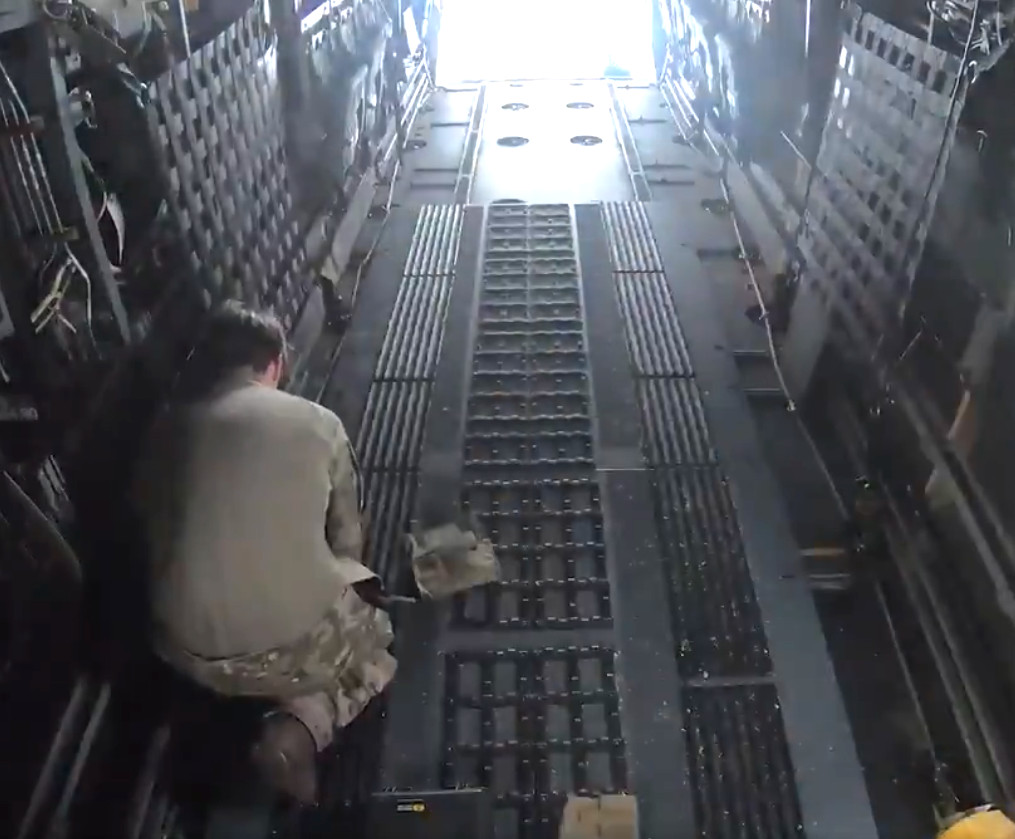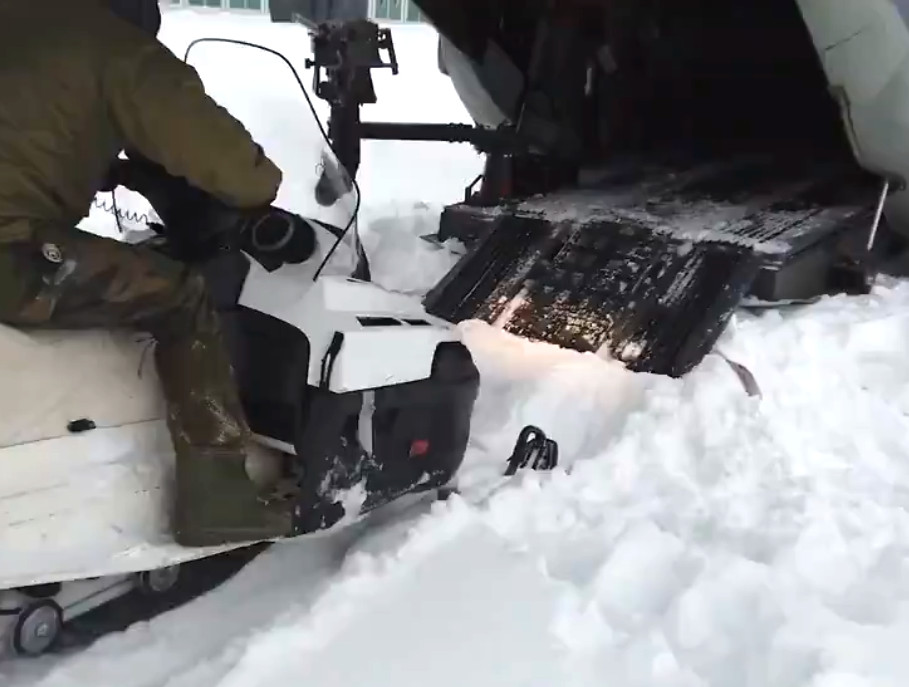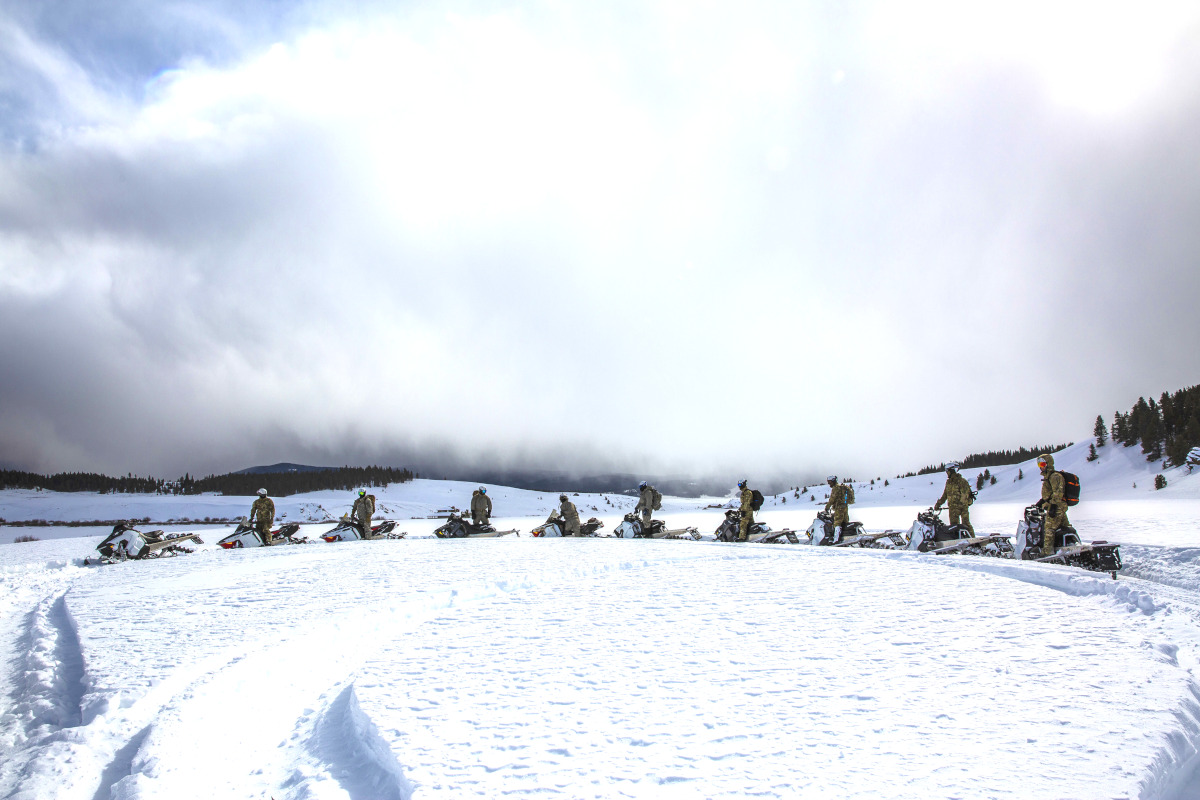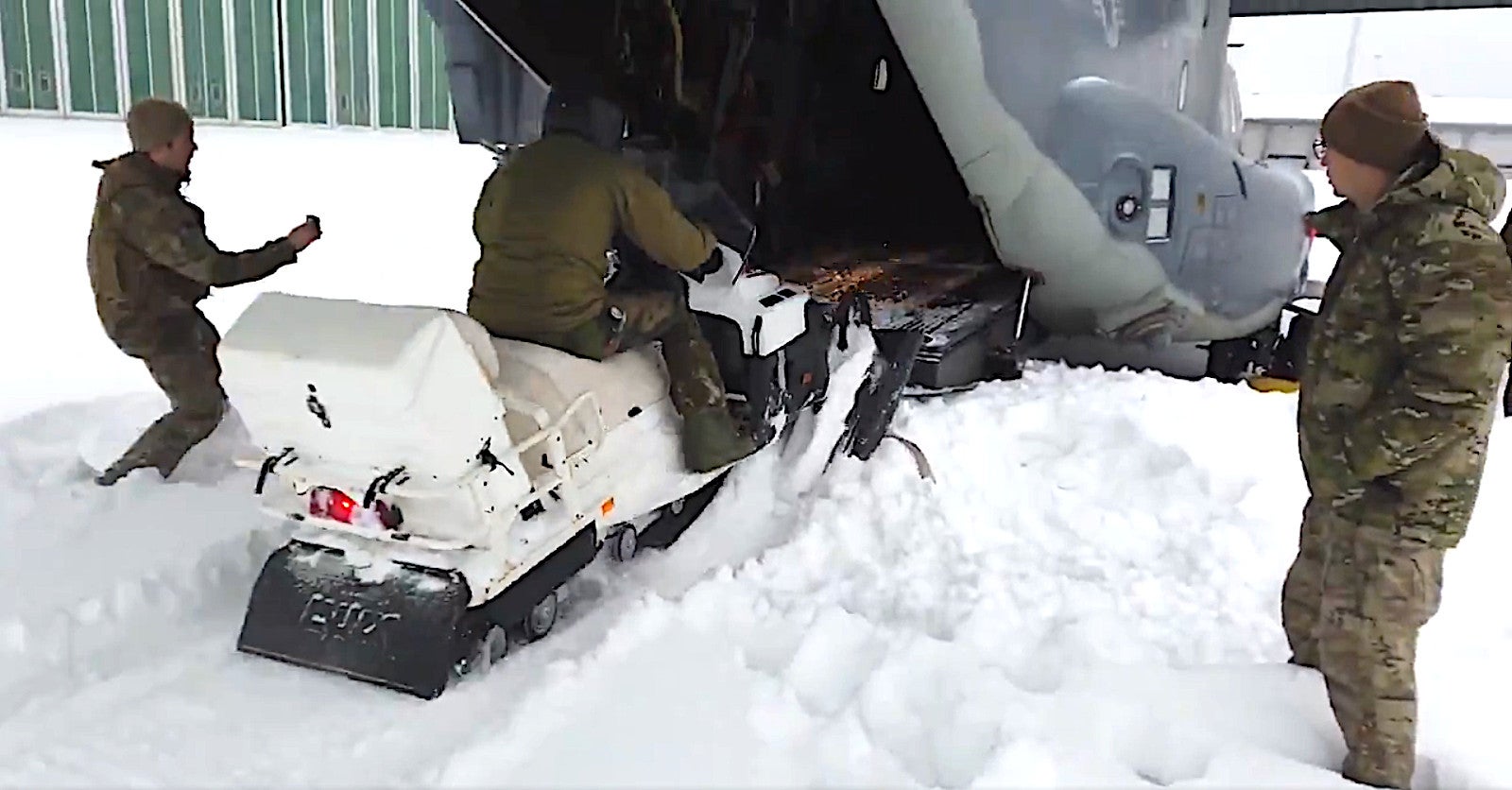The Pentagon recently released a video showing U.S. Air Force special operations CV-22 Ospreys equipped with a new cabin floor and ramp system rapidly inserting and extracting personnel on snowmobiles during an exercise in Norway in a scene straight out of an old G.I. Joe comic. However, this tactic could be of very real importance in the future as the U.S. military and its allies increasingly prepare for the potential for a large scale conflict to occur in and around the strategic Arctic region.

The U.S. Department of Defense’s official Twitter account included the footage in a post on Nov. 5, 2019, but did not say when the exercise occurred or what American units were involved specifically. At least one other copy appeared on YouTube the day before. There Air Force’s 7th Special Operations Squadron, part of the 352nd Special Operations Wing, is equipped with CV-22s and is forward-deployed at RAF Mildenhall in the United Kingdom, but units from the United States also regularly travel to various locations in Europe to conduct training exercises. The clip shows Norweigan military personnel actually operating the snowmobiles, as well as exiting the Ospreys on skis.
American special operations forces, as well as conventional units across the U.S. military, regularly train to insert and extract personnel riding on various types of motorcycles, all-terrain vehicles, other light vehicles, and even boats, using Ospreys and heavy helicopters, as well as larger aircraft. These tactics allow personnel to rapidly move away from a landing zone, making it more difficult for opponents to respond to the insertion, and quickly get back onto aircraft at the end of a mission, limiting the amount of time the entire force is vulnerable on the ground.
The Air Force has now developed a dedicated system for supporting snowmobile operations in conjunction with the CV-22, which keeps the cabin floor protected from potential damage and allows operators driving the vehicles to get safely in and out of the tilt-rotor. The exercise in Norway appears to be one of the first opportunities to test an improved version of this configuration in a real-world environment.

“The V-22s had already worked a little bit with snowmobile insertion and extraction, bringing them to where we need them and then picking them back up,” an unnamed Air Force special operator says in the video the Pentagon released. “We knew that the users were wanting more Arctic operations. We knew that snowmobiles were becoming a little bit of a high-interest item.”
That same individual said that originally Osprey crews working with snowmobiles had installed rubber horse stall mats in the main cabin of the aircraft and attached them to the floor with carabiner clips in a “makeshift” arrangement. Personnel also added extensions to the CV-22’s rear ramp, created by cutting up an old tread from a snowmobile into multiple sections, for the vehicles to drive up inside the aircraft.
“The issues that we found with that was that the conditions had to be exactly right in order for the snowmobile to actually get on the ramp,” the air Force special operator noted. “The way we had to use the existing ramp system just hindered us in too many ways.”
The video shows that there is now an improved set of cabin mats that screw securely to the floor inside the Osprey and a purpose-built three-piece rubber ramp extension. This is known as the Snowmobile Loading and Transportation System (SLATS). The CV-22’s rear-mounted .50 caliber GAU-21/A machine gun is already on a mount that swings out of the way so personnel and vehicles to rapidly exit and enter the aircraft. It works the exact same way in conjunction with the snowmobile system.


That this capability was on display during an exercise in Norway is hardly surprising. The NATO member began hosting regular rotations of U.S. Marines in 2017 as part of broader changes in the alliance’s posture in Scandanavia, which are aimed at a countering potential Russian aggression in that region. Last year, the Norweigan government agreed to allow even larger contingents of Marines to deploy for longer periods as part of this rotating mission.
In 2018, Norway also hosted Trident Juncture, the largest NATO exercise in decades, which involved forces from alliance members, and other regional partners, on land, in the air, and at sea. More than 50,000 personnel in total, along with hundreds of aircraft and dozens of ships, took part. U.S. special operations and conventional forces from across the services have been taking part in a growing number of smaller exercises and other more routine training events in the region in recent years, as well.

Over the last few years, Russian combat aircraft have conducted a number of exercises that have included mock attack runs on a strategic radar site in Norway’s far north, a facility that you can read about in more detail in this past War Zone piece, as well. There have also been unconfirmed reports this year that Russia has actually infiltrated special operations units onto Norweigan soil above the Arctic Circle.
The Arctic, overall, is only becoming of greater significance to various countries, including the United States and Russia. The Russian military has been building and expanding a number of air bases and other facilities in its far north regions, which are increasingly able to support heavy aviation operations and more. Russia has also begun to develop a number of ground vehicles, including its own combat snowmobiles, with fully-enclosed cabs to allow for greater comfort in extremely low temperatures, specifically for operations in this region.
During a potential major conflict in the region, special operators, as well as conventional forces, could easily find themselves needing to rapidly get in and out of remote areas to conduct various missions, including long-range intelligence-gathering patrols and direct action raids. Ospreys, as well as other aircraft and helicopters, inserting small units on snowmobiles could be an important component of these types of operations.
Ospreys have the added advantage of being able to fly further and faster than traditional helicopters, which could be critical for accessing remote Arctic areas. They can also do so while flying at very low levels, under any weather conditions, and at night, which normal helicopters can’t. These capabilities could also make CV-22s carrying forces on snowmobiles a valuable asset for responding to reports of hostile infiltrators, as well.

All told, as the Air Force special operator narrating the video said, snowmobiles are becoming a more integral part of U.S. operations in places like Norway. So, while it might seem like something out of an action movie, the U.S. military’s real interest in being able to deploy forces with these vehicles rapidly, using aircraft such as the CV-22, will only continue to grow in the future.
Contact the author: joe@thedrive.com
